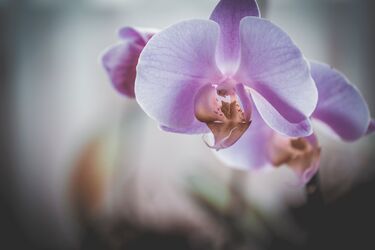How to grow beautiful orchids at home: secrets from gardeners

Orchids are a popular choice for indoor plant lovers because they look exotic and can bloom for several months. However, growing orchids at home is not always an easy task.
In order for your orchid to bloom for a long and beautiful time, it is important to know the basic rules of caring for it. SantePlus shared its secrets for growing orchids.
Also read: What to rub an orchid with to make it "come to life": an easy hack with aloe
Transplanting orchids
It is advisable to transplant an orchid for the first time after purchase. This will allow you to examine the roots and check for signs of disease or pests. To do this, carefully remove the orchid from the pot and dip its roots under water to easily remove them from the substrate and also to make them more flexible and less brittle.
Then remove any dead and outdated roots. To recognize them, simply press the roots with your fingers. If the root is hard, then it is still alive. If it is soft, then it needs to be cut off. This tip will allow you to distinguish between the dead roots of your plant and the aerial roots, which are still useful.
Now you can transplant your orchid into another larger pot so that the plant has space to develop its roots. You can use a clear plastic pot to easily check the condition of your plant's roots.
All you have to do is add a new growing medium. Be sure to choose a special soil for orchids. It consists of, among other things, a mixture of coconut fibers, charcoal, bark mulch and clay balls. This substrate provides the aeration and nutrients your plant needs.
Repot the orchid when the soil is depleted, usually every 2-3 years. You can also use a liquid fertilizer once a month, and more often during the flowering period, but don't overdo it. Too much fertilizer can stop the orchid from blooming.
Light for orchids
Orchids are indoor plants that love light and bright rooms. Keep them in rooms with plenty of light but choose filtered light as direct exposure to sunlight can burn their leaves.
Also read: Wilted leaves on the peace lily: an expert told how to revive the houseplant
In addition, orchids do not like cool climates, so keep them at temperatures between 18°C and 25°C, otherwise, they will not be able to bloom. Also, keep them away from drafts and heating equipment such as radiators.
Watering orchids
Regular watering is recommended for orchids, especially during the growth period. A weekly watering is sufficient. Be sure to water them but not excessively. To make watering easier, immerse the pot in a bowl of water for 5-10 minutes. Then drain the water from the pot into the sink and get rid of any standing water in the planter. Remember to wet the leaves of your plant.
Water the plant again when the roots and soil are dry only and use water at room temperature. Cold or hot water can damage the roots. The orchid also does not like hard tap water, so water it with rainwater or filtered water.
Be sure to keep a close eye on your plant for signs of dehydration.
Find out where to keep an orchid in an apartment in winter so that the plant does not suffer.
If you want to get the latest news about the war and events in Ukraine, subscribe to our Telegram channel!
